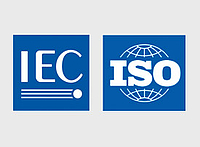Regulatory Affairs
Articles introducing the medical device regulatory framework.
Learn more about
- Relevant national laws
- European medical device regulations (MDR) and European medical device directive (MDD)
- and essential requirements,
- Harmonized standards and common specifications,
- Other relevant regulatory documents (e.g. MEDDEV documents),
- Approval processes (CE-marking and FDA 510(k))
- Submission documents (including technical documentation)
We also cover topics related so classification of software as medical device, classification of medical devices according to MDD and the role of the notified bodies.
This video introduces the European medical device regulations and conformity assessment procedures (CE marking process). It explains the consequences of the classes (I, IIa, IIb, III) and when an ISO 13485 certified quality management system is required.
Medical Device Regulation MDR
In February 2017, the EU commission released the final versions of the Medical Device Regulation MDR and In-vitro Diagnostic Device Directive IVDR. These regulations will replace the EU directives (MDD, IVDD, and AIMD).
This article gives on overview on:
- Changes by MDR (in comparison to MDD)
- Main differences to US / FDA regulations
- The Medical Device Regulation itself (MDR at a glance)
- Estimated time line / transition period
- Assessment / criticism
Further articles related to the MDR cover the "famous rule 11" (important for software products), the Unique Device Identification (UDI) and the EUDAMED.
Medical Products Authorization Procedures in Europe and the USA

The fact that medical devices may not be placed on the market without any form of testing is obvious. But who examines the products? Who gives the authorization? Is there an authorization of medical devices? The answer to these questions differs in European and US legal procedures. more..
Notified Bodies
Notified bodies are government accredited, mostly private companies that take over sovereign tasks, in which they audit medical device manufacturers and examine their technical documentation for its compliancy with the legal requirements. more..
FDA - the U.S Food and Drug Administration

This article is particularly for those who develop medical products for the US market (which come with software or are standalone softwares), and therefore they are required to meet the FDA regulations.
Essential Requirements
The medical products directive describes "essential requirements", as the requirements that every medical product has to fulfill, according to the scope they belong to. These essential requirements are described by Directive in Appendix I. more..
Classification of Medical Products
When classifying products, it is important to distinguish between two classifications:
- Classification, whether or not the product is a medical device
- Classification of the medical device according to Medical products Directive, i.e. I, IIa, IIb and III. more..
Accessories for Medical Products: Definition and Regulatory Requirements

There are many definitions about accessories. The term accessories differentiates in its definition in the medical devices act. This article gives you an overview about the definitions, the regulatory requirements and the frequently asked questions. more..
Software as Medical Device
Software as a medical device, differentiates between standalone software and software that is part of a medical device. Classifying the standalone (also called SaMD - Software as Medical Device) software is often difficult, especially whether or not it is classified as a medical device. more..
Harmonized Standards

Standards are documents, written by the national or international standardization committees, to document the 'state of the art'. They usually include a standard you should not fall short of as a professional trade company. more..
MEDDEV – Medical Devices Documents
MEDDEV documents summarise the consensus of various working groups that would have been proposed later in the EC Commission. The contents are guidelines that will be developed for the application of the EC guidelines for medical products and are revised periodically. MEDDEV is derived from medical devices. more..
Technical File versus DHF
The FDA requires in 21 CFR Part 820 a Design History DHF (these are the "Quality System Regulations"). This DHF should not be confused with the Device History Record or the Device Master Record. This post explains what the Design History File must contain and how it differs from the other two "acts". more..
Unannounced Audits by Notified Bodies

Unannounced audits are random sampling checks of the quality management systems by notified bodies with the aim of finding out if medical device manufacturers are working in conformity with their quality management system (eg according to ISO 13485), being able to identify deviations and react quickly and to uncover fraud in a more reliable way. more..



